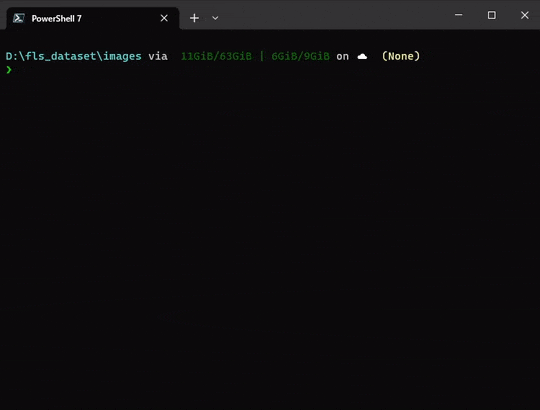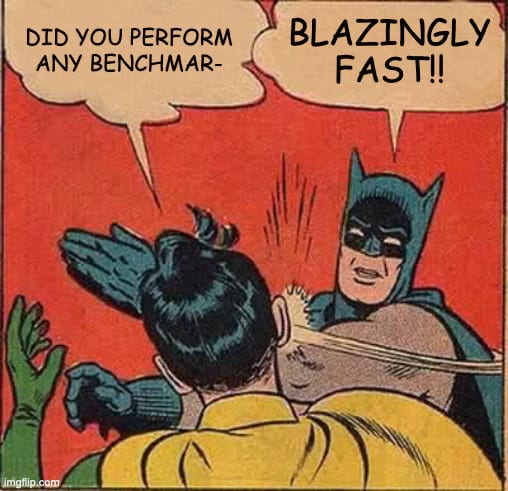31 个版本
| 0.7.6 | 2024 年 8 月 8 日 |
|---|---|
| 0.7.5 | 2024 年 7 月 2 日 |
| 0.7.4 | 2024 年 5 月 27 日 |
| 0.7.2 | 2024 年 3 月 9 日 |
| 0.3.1 | 2023 年 2 月 24 日 |
#356 在 命令行工具
每月 115 次下载
在 quiet-stroll 中使用
43KB
465 行
f[rame]ls
描述
framels 项目旨在提供一个受 Buf Compagnie 的 bls 或更近期的 RV 的 rvls 启发的 ls 命令。
用户指南
用户指南在这里:https://forticheprod.github.io/fls/.
安装
预编译二进制文件
您可以从https://github.com/forticheprod/fls/releases下载最新版本。
Windows
支持 Windows 10 x86
Linux
支持当前 Linux 发行版,已测试 Fedora 37、CentOS 7、Manjaro 22
从 Cargo 安装
您可以通过https://crates.io/安装。
运行 cargo install framels
用法
帮助
运行 fls --help
基本列出
运行 fls 以列出当前目录。

$ touch aaa.001.tif aaa.002.tif aaa.003.tif aaa.004.tif aaa.005.tif foo_bar.exr
$ fls
foo_bar.exr
aaa.***.tif@1-5
运行 fls /path/of/directory/ 以列出特定目录。
使用根目录下的示例集合 big 的示例
$ fls samples/big/
RenderPass_Pcam_1_*****.exr@0-96
RenderPass_Beauty_1_*****.exr@0-96
RenderPass_IndDiffuse_1_*****.exr@0-96
RenderPass_Ncam_1_*****.exr@0-41,43-96
RenderPass_Specular_1_*****.exr@0-96
RenderPass_Id_1_*****.exr@0-96
RenderPass_Occlusion_1_***.exr@74
RenderPass_Reflection_1_*****.exr@0-96
RenderPass_SpecularRim_1_*****.exr@0-96
RenderPass_Ncam_1_00042.exr.bkp
RenderPass_DiffuseKey_1_*****.exr@0-96
RenderPass_Diffuse_1_*****.exr@0-96
RenderPass_Occlusion_1_*****.exr@0-73,75-96
Exr 元数据
受 rvls 启发。您可以使用 -l
运行 fls -l 以列出当前目录并显示 EXR 信息。
运行 fls -l /path/of/directory/ 以列出特定目录并显示 EXR 信息。
$ fls -l samples/big/
RenderPass_Beauty_1_*****.exr@0-96
RenderPass_Occlusion_1_*****.exr@0-73,75-96
RenderPass_Id_1_*****.exr@0-96
RenderPass_Occlusion_1_***.exr@74
RenderPass_Ncam_1_00042.exr.bkp
RenderPass_SpecularRim_1_*****.exr@0-96
RenderPass_DiffuseKey_1_*****.exr@0-96
RenderPass_Pcam_1_*****.exr@0-96
RenderPass_Reflection_1_*****.exr@0-96
RenderPass_Specular_1_*****.exr@0-96
RenderPass_Diffuse_1_*****.exr@0-96
RenderPass_IndDiffuse_1_*****.exr@0-96
RenderPass_Ncam_1_*****.exr@0-41,43-96
.\samples\big\RenderPass_Beauty_1_00000.exr layer #0 size:Vec2(320, 143); channels:ChannelList { list: [ChannelDescription { name: exr::Text("A"), sample_type: F16, quantize_linearly: false, sampling: Vec2(1, 1) }, ChannelDescription { name: exr::Text("B"), sample_type: F16, quantize_linearly: false, sampling: Vec2(1, 1) }, ChannelDescription { name: exr::Text("G"), sample_type: F16, quantize_linearly: false, sampling: Vec2(1, 1) }, ChannelDescription { name: exr::Text("Plane_Beauty.A"), sample_type: F16, quantize_linearly: false, sampling: Vec2(1, 1) }, ChannelDescription { name: exr::Text("Plane_Beauty.B"), sample_type: F16, quantize_linearly: false, sampling: Vec2(1, 1) }, ChannelDescription { name: exr::Text("Plane_Beauty.G"), sample_type: F16, quantize_linearly: false, sampling: Vec2(1, 1) }, ChannelDescription { name: exr::Text("Plane_Beauty.R"), sample_type: F16, quantize_linearly: false, sampling: Vec2(1, 1) }, ChannelDescription { name: exr::Text("R"), sample_type: F16, quantize_linearly: false, sampling: Vec2(1, 1) }, ChannelDescription { name: exr::Text("Spheres_Beauty.A"), sample_type: F16, quantize_linearly: false, sampling: Vec2(1, 1) }, ChannelDescription { name: exr::Text("Spheres_Beauty.B"), sample_type: F16, quantize_linearly: false, sampling: Vec2(1, 1) }, ChannelDescription { name: exr::Text("Spheres_Beauty.G"), sample_type: F16, quantize_linearly: false, sampling: Vec2(1, 1) }, ChannelDescription { name: exr::Text("Spheres_Beauty.R"), sample_type: F16, quantize_linearly: false, sampling: Vec2(1, 1) }], bytes_per_pixel: 24, uniform_sample_type: Some(F16) }
.\samples\big\RenderPass_Occlusion_1_00000.exr layer #0 size:Vec2(320, 139); channels:ChannelList { list: [ChannelDescription { name: exr::Text("A"), sample_type: F16, quantize_linearly: false, sampling: Vec2(1, 1) }, ChannelDescription { name: exr::Text("B"), sample_type: F16, quantize_linearly: false, sampling: Vec2(1, 1) }, ChannelDescription { name: exr::Text("G"), sample_type: F16, quantize_linearly: false, sampling: Vec2(1, 1) }, ChannelDescription { name: exr::Text("R"), sample_type: F16, quantize_linearly: false, sampling: Vec2(1, 1) }], bytes_per_pixel: 8, uniform_sample_type: Some(F16) }
.\samples\big\RenderPass_Id_1_00000.exr layer #0 size:Vec2(140, 52); channels:ChannelList { list: [ChannelDescription { name: exr::Text("A"), sample_type: F16, quantize_linearly: false, sampling: Vec2(1, 1) }, ChannelDescription { name: exr::Text("B"), sample_type: F16, quantize_linearly: false, sampling: Vec2(1, 1) }, ChannelDescription { name: exr::Text("G"), sample_type: F16, quantize_linearly: false, sampling: Vec2(1, 1) }, ChannelDescription { name: exr::Text("R"), sample_type: F16, quantize_linearly: false, sampling: Vec2(1, 1) }], bytes_per_pixel: 8, uniform_sample_type: Some(F16) }
.\samples\big\RenderPass_Occlusion_1_074.exr layer #0 size:Vec2(320, 156); channels:ChannelList { list: [ChannelDescription { name: exr::Text("A"), sample_type: F16, quantize_linearly: false, sampling: Vec2(1, 1) }, ChannelDescription { name: exr::Text("B"), sample_type: F16, quantize_linearly: false, sampling: Vec2(1, 1) }, ChannelDescription { name: exr::Text("G"), sample_type: F16, quantize_linearly: false, sampling: Vec2(1, 1) }, ChannelDescription { name: exr::Text("R"), sample_type: F16, quantize_linearly: false, sampling: Vec2(1, 1) }], bytes_per_pixel: 8, uniform_sample_type: Some(F16) }
Not an exr
.\samples\big\RenderPass_SpecularRim_1_00000.exr layer #0 size:Vec2(320, 143); channels:ChannelList { list: [ChannelDescription { name: exr::Text("A"), sample_type: F16, quantize_linearly: false, sampling: Vec2(1, 1) }, ChannelDescription { name: exr::Text("B"), sample_type: F16, quantize_linearly: false, sampling: Vec2(1, 1) }, ChannelDescription { name: exr::Text("G"), sample_type: F16, quantize_linearly: false, sampling: Vec2(1, 1) }, ChannelDescription { name: exr::Text("R"), sample_type: F16, quantize_linearly: false, sampling: Vec2(1, 1) }], bytes_per_pixel: 8, uniform_sample_type: Some(F16) }
.\samples\big\RenderPass_DiffuseKey_1_00000.exr layer #0 size:Vec2(320, 143); channels:ChannelList { list: [ChannelDescription { name: exr::Text("A"), sample_type: F16, quantize_linearly: false, sampling: Vec2(1, 1) }, ChannelDescription { name: exr::Text("B"), sample_type: F16, quantize_linearly: false, sampling: Vec2(1, 1) }, ChannelDescription { name: exr::Text("G"), sample_type: F16, quantize_linearly: false, sampling: Vec2(1, 1) }, ChannelDescription { name: exr::Text("R"), sample_type: F16, quantize_linearly: false, sampling: Vec2(1, 1) }], bytes_per_pixel: 8, uniform_sample_type: Some(F16) }
.\samples\big\RenderPass_Pcam_1_00000.exr layer #0 size:Vec2(320, 143); channels:ChannelList { list: [ChannelDescription { name: exr::Text("A"), sample_type: F32, quantize_linearly: false, sampling: Vec2(1, 1) }, ChannelDescription { name: exr::Text("B"), sample_type: F32, quantize_linearly: false, sampling: Vec2(1, 1) }, ChannelDescription { name: exr::Text("G"), sample_type: F32, quantize_linearly: false, sampling: Vec2(1, 1) }, ChannelDescription { name: exr::Text("R"), sample_type: F32, quantize_linearly: false, sampling: Vec2(1, 1) }], bytes_per_pixel: 16, uniform_sample_type: Some(F32) }
.\samples\big\RenderPass_Reflection_1_00000.exr layer #0 size:Vec2(320, 143); channels:ChannelList { list: [ChannelDescription { name: exr::Text("A"), sample_type: F16, quantize_linearly: false, sampling: Vec2(1, 1) }, ChannelDescription { name: exr::Text("B"), sample_type: F16, quantize_linearly: false, sampling: Vec2(1, 1) }, ChannelDescription { name: exr::Text("G"), sample_type: F16, quantize_linearly: false, sampling: Vec2(1, 1) }, ChannelDescription { name: exr::Text("R"), sample_type: F16, quantize_linearly: false, sampling: Vec2(1, 1) }], bytes_per_pixel: 8, uniform_sample_type: Some(F16) }
.\samples\big\RenderPass_Specular_1_00000.exr layer #0 size:Vec2(320, 143); channels:ChannelList { list: [ChannelDescription { name: exr::Text("A"), sample_type: F16, quantize_linearly: false, sampling: Vec2(1, 1) }, ChannelDescription { name: exr::Text("B"), sample_type: F16, quantize_linearly: false, sampling: Vec2(1, 1) }, ChannelDescription { name: exr::Text("G"), sample_type: F16, quantize_linearly: false, sampling: Vec2(1, 1) }, ChannelDescription { name: exr::Text("R"), sample_type: F16, quantize_linearly: false, sampling: Vec2(1, 1) }], bytes_per_pixel: 8, uniform_sample_type: Some(F16) }
.\samples\big\RenderPass_Diffuse_1_00000.exr layer #0 size:Vec2(320, 143); channels:ChannelList { list: [ChannelDescription { name: exr::Text("A"), sample_type: F16, quantize_linearly: false, sampling: Vec2(1, 1) }, ChannelDescription { name: exr::Text("B"), sample_type: F16, quantize_linearly: false, sampling: Vec2(1, 1) }, ChannelDescription { name: exr::Text("G"), sample_type: F16, quantize_linearly: false, sampling: Vec2(1, 1) }, ChannelDescription { name: exr::Text("R"), sample_type: F16, quantize_linearly: false, sampling: Vec2(1, 1) }], bytes_per_pixel: 8, uniform_sample_type: Some(F16) }
.\samples\big\RenderPass_IndDiffuse_1_00000.exr layer #0 size:Vec2(320, 143); channels:ChannelList { list: [ChannelDescription { name: exr::Text("A"), sample_type: F16, quantize_linearly: false, sampling: Vec2(1, 1) }, ChannelDescription { name: exr::Text("B"), sample_type: F16, quantize_linearly: false, sampling: Vec2(1, 1) }, ChannelDescription { name: exr::Text("G"), sample_type: F16, quantize_linearly: false, sampling: Vec2(1, 1) }, ChannelDescription { name: exr::Text("R"), sample_type: F16, quantize_linearly: false, sampling: Vec2(1, 1) }], bytes_per_pixel: 8, uniform_sample_type: Some(F16) }
.\samples\big\RenderPass_Ncam_1_00000.exr layer #0 size:Vec2(320, 143); channels:ChannelList { list: [ChannelDescription { name: exr::Text("A"), sample_type: F16, quantize_linearly: false, sampling: Vec2(1, 1) }, ChannelDescription { name: exr::Text("B"), sample_type: F16, quantize_linearly: false, sampling: Vec2(1, 1) }, ChannelDescription { name: exr::Text("G"), sample_type: F16, quantize_linearly: false, sampling: Vec2(1, 1) }, ChannelDescription { name: exr::Text("R"), sample_type: F16, quantize_linearly: false, sampling: Vec2(1, 1) }], bytes_per_pixel: 8, uniform_sample_type: Some(F16) }
递归
您可以使用目录和子目录的递归方法
您可以使用 -r
运行 fls -r /path/of/directory/ 列出特定目录及其子目录
$ fls -r .\samples\
.\samples\big\RenderPass_Diffuse_1_*****.exr@0-96
.\samples\big\RenderPass_Ncam_1_00042.exr.bkp
.\samples\big\RenderPass_DiffuseKey_1_*****.exr@0-96
.\samples\big\RenderPass_Occlusion_1_*****.exr@0-73,75-96
.\samples\big\RenderPass_Occlusion_1_***.exr@74
.\samples\small\foo_bar.exr
.\samples\big\RenderPass_SpecularRim_1_*****.exr@0-96
.\samples\big\RenderPass_Pcam_1_*****.exr@0-96
.\samples\big\RenderPass_Ncam_1_*****.exr@0-41,43-96
.\samples\small
.\samples\big
.\samples\big\RenderPass_Id_1_*****.exr@0-96
.\samples\big\RenderPass_Specular_1_*****.exr@0-96
.\samples\big\RenderPass_Beauty_1_*****.exr@0-96
.\samples
.\samples\big\RenderPass_IndDiffuse_1_*****.exr@0-96
.\samples\big\RenderPass_Reflection_1_*****.exr@0-96
.\samples\small\aaa.***.tif@1-5
树状图
您可以使用目录和子目录的树状图方法
您可以使用 -t
始终使用 -r 来使用树状模式。
运行 fls -t -r /path/of/directory/ 列出特定目录及其子目录
$ fls -t -r .\samples\
┗
┗ samples
┗ big
┗ RenderPass_Beauty_1_*****.exr@0-96
┗ RenderPass_DiffuseKey_1_*****.exr@0-96
┗ RenderPass_Diffuse_1_*****.exr@0-96
┗ RenderPass_Id_1_*****.exr@0-96
┗ RenderPass_IndDiffuse_1_*****.exr@0-96
┗ RenderPass_Ncam_1_*****.exr@0-41,43-96
┗ RenderPass_Ncam_1_00042.exr.bkp
┗ RenderPass_Occlusion_1_*****.exr@0-73,75-96
┗ RenderPass_Occlusion_1_***.exr@74
┗ RenderPass_Pcam_1_*****.exr@0-96
┗ RenderPass_Reflection_1_*****.exr@0-96
┗ RenderPass_SpecularRim_1_*****.exr@0-96
┗ RenderPass_Specular_1_*****.exr@0-96
┗ mega
┗ response_1689510067951.json
┗ small
┗ aaa.***.tif@1-5
┗ foo_bar.exr
基准测试
使用示例 big,与 rvls、lsseq 或 lss 进行一些时间比较。
以下基准测试使用 hyperfine 进行,预热迭代次数为 3 次
简单文件列出
| 工具 | fls4.0.0 |
rvls2023.0.1 |
lsseq-l |
lss |
|---|---|---|---|---|
| 时间 | 4.7 毫秒 | 23.3 毫秒 | 33.5 毫秒 | 41.8 毫秒 |
hyperfine -N --warmup 3 'target/release/fls ./samples/big/'
Benchmark 1: target/release/fls ./samples/big/
Time (mean ± σ): 4.7 ms ± 0.7 ms [User: 4.9 ms, System: 1.7 ms]
Range (min … max): 4.3 ms … 11.5 ms 560 runs
hyperfine --warmup 3 '~/Downloads/rv-centos7-x86-64-2023.0.1/bin/rvls ./samples/big/'
Benchmark 1: ~/Downloads/rv-centos7-x86-64-2023.0.1/bin/rvls ./samples/big/
Time (mean ± σ): 23.3 ms ± 7.1 ms [User: 20.1 ms, System: 2.3 ms]
Range (min … max): 19.4 ms … 51.5 ms 75 runs
Exr 读取
| 工具 | fls-l |
rvls-l |
|---|---|---|
| 时间 | 7.3 毫秒 | 95.8 毫秒 |
问题和 PR
欢迎提出问题、反馈和 PR
一些硬性规则,我不会妥协
- Windows 兼容
- 速度
- UTF8 友好
- 纯 Rust
感谢
感谢
- Ben Legros 在啤酒(或许多)上的间接指导
- Djl 的想法
- Tcherno
- Mercenaries Eng 最好的渲染引擎(使用 Guerilla render 的样本/大渲染)
依赖关系
~10MB
~154K SLoC
